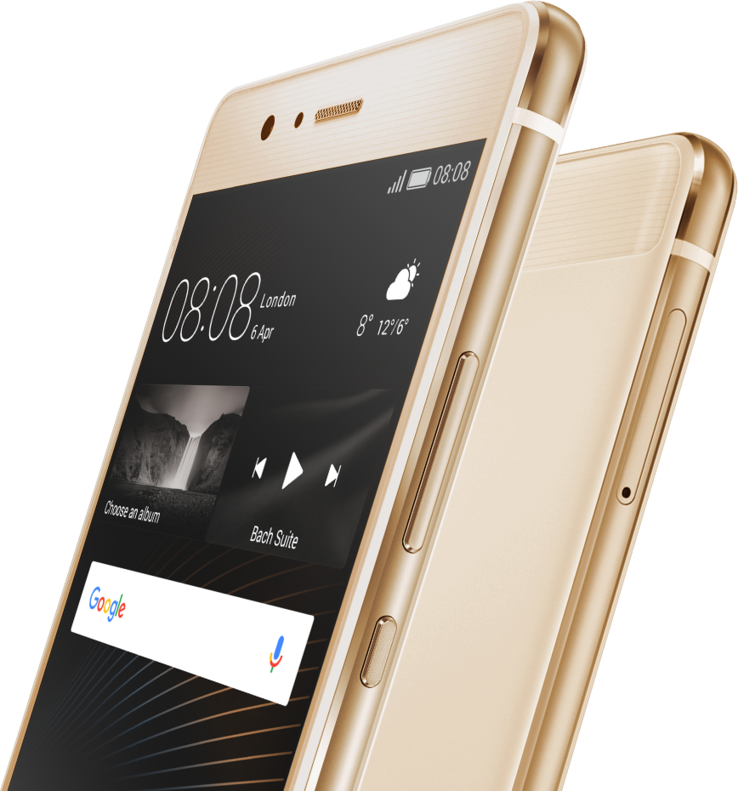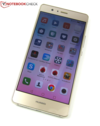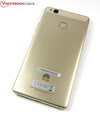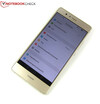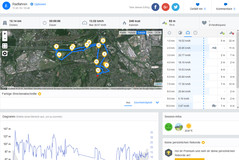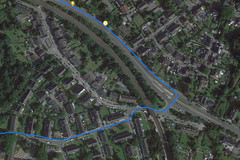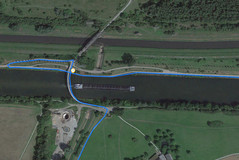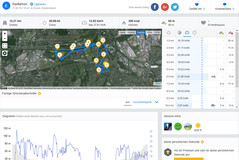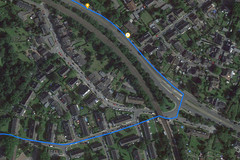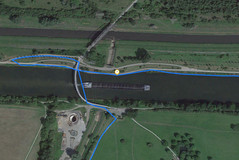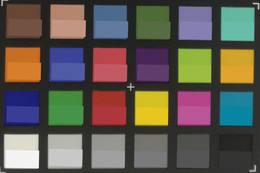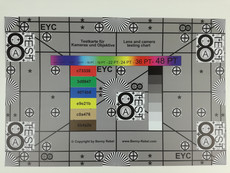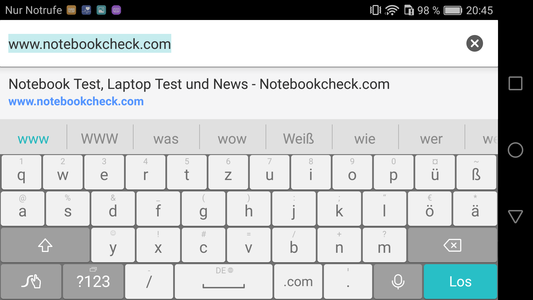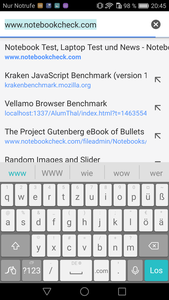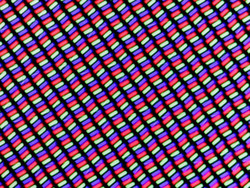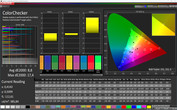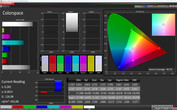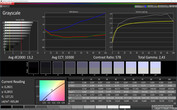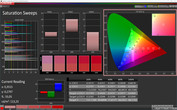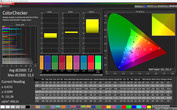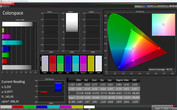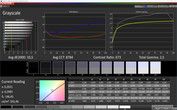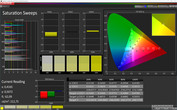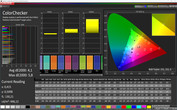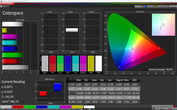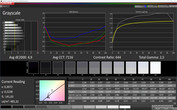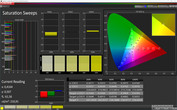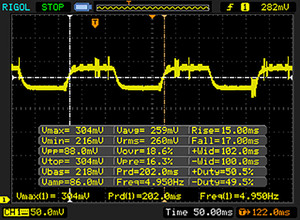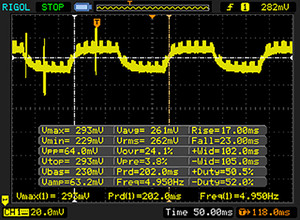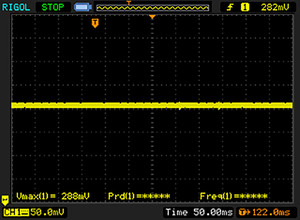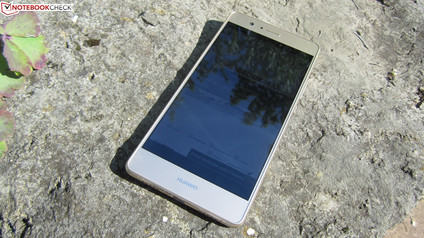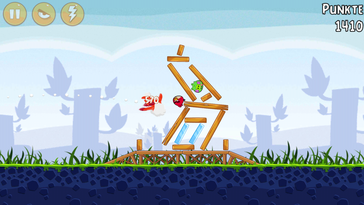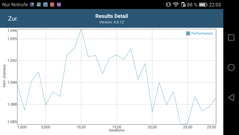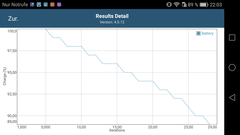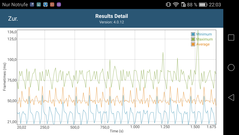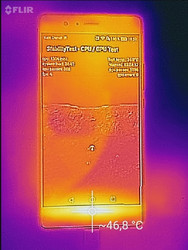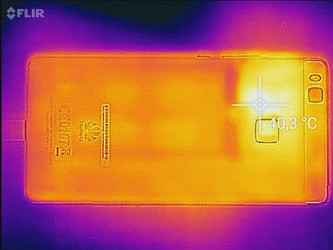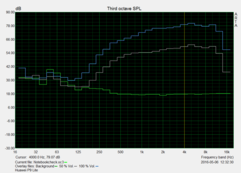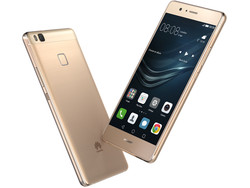Huawei P9 Lite Smartphone Review

For the original German review, see here.
Huawei markets the P9 Lite as a scaled-down model of its P9 top model. Buyers get a stylish 5.2-inch Android smartphone with premium-range equipment for around 300 Euros (~$334). This includes a 1920x1080 pixel resolution IPS screen, a fingerprint scanner, NFC, LTE and, depending on the model, up to two SIM slots. In contrast to the P9, the P9 Lite is a bit weaker. However, it achieves solid performance thanks to the HiSilicon Kirin 650 octa-core SoC. It cannot boast to offer one of the signboard-features of its roughly 200 Euros (~$223) more expensive brother, which is the 12 MP dual-camera by Leica. The review sample's photo and video equipment, in the form of a 13-megapixel primary camera and an 8-megapixel webcam, are nevertheless impressive. The latest Android 6.0 version that Huawei expands via its Emotion UI 4.1 powers the P9 Lite.
Case
The casing makes the big price difference of the P9 and P9 Lite most evident. The rounded corners and edges of the P9 Lite follow the looks of its nice-to-hold brother, but the P9 feels a tiny bit better due to its aluminum unibody. The P9 Lite is "only" available with a white, black or gold-colored metal casing with a plastic back cover. Despite this thrifty choice of materials, the P9 is pleasant to hold although its sleek back cover could have a bit more grip. The low height of 7.5 millimeters (~0.30 in) fits well to its elegant appearance, and is 2 millimeters (~0.08 in) smaller than the already fairly slim P8 Lite predecessor. The P9 is even slimmer (7 millimeters/~0.28 in), but its weight of 143 grams (~5.0 oz) is almost on par with the 147 grams (~5.2 oz) of the P9 Lite.
Connectivity
As usual for Huawei, a proprietary processor is installed in the P9 Lite. The HiSilicon Kirin 650 mid-range SoC operates in the review sample. Four of its cores clock at 2 GHz and the other four at 1.7 GHz each. The integrated ARM Mali-T830 MP2 graphics unit renders up-to-date games smoothly in medium resolutions. The P9 Lite relies on the same generous memory configuration with 3 GB of RAM as the P9.
The P9 Lite has also inherited various advantages and disadvantages of the P9. Wi-Fi Direct, Miracast and USB OTG support are on the plus side. When connected to a PC, a virtual CD drive that contains the HiSuite software is set up automatically. Users can create a local backup, manage data or install updates for the smartphone here.
The 16 GB storage of which approximately 9.5 GB are unused in factory state can be expanded by up to 128 GB, but it cannot be used as additional internal storage. We could not install apps on the micro-SD card or move them to it in the test.
Two SIM cards can be inserted in the hybrid slot. Users who do not need to expand the storage via a micro-SD card can insert another SIM card in addition to a nano-SIM card in the P9 Lite.
Software
The latest Android 6.0 version powers the P9 Lite. Huawei supplements the operating system with its own slim Emotion UI 4.1 (EMUI) user interface. Convenient features or ones that are used frequently, such as the flashlight, calculator or camera, can be opened directly on the lock screen. The manufacturer does not preload excessive software. Besides the usual apps, like Google's tools, only a small game collection and a limited selection of helpful software like a phone manager and fitness app are installed.
Communication & GPS
In contrast to the P9, a somewhat slimmed down wireless module is installed in the P9 Lite. Both smartphones offer the same 2G and 3G connectivity and support LTE. The P9 Lite is limited to the 1, 3 and 7 frequency bands, so basically all LTE bands relevant for European countries, including Germany. Nominal transmission rates of up to 150 MBit/s (download) and up to 50 MBit/s (upload) are possible.
The P9 Lite communicates over short distances via Bluetooth 4.1 and Wi-Fi 802.11 b/g/n (P9: Bluetooth 4.2, Wi-Fi 802.11 a/b/g/n/ac). Data transfer via Wi-Fi is only performed in the 2.4 GHz network, but it was as fast as expected in the test; dropouts or unexpected disconnections did not occur.
The P9 Lite accurately and quickly localized us via GPS although the P9 is slightly more precise. As our approximately 12 kilometer (~7.5 mi) bike tour proves, that does not affect the P9 Lite's everyday suitability. The smartphone displayed an aberration of only 70 meters (~230 ft) over the entire route in the comparison with Garmin's Edge 500 professional navigation system. The P9 was measurably even less accurate with a difference of 220 meters (~722 ft).
Telephone & Call Quality
The P9 does a proper job in telephony starting with the tried and convenient phone app up to call quality. The callers were always clearly intelligible at both ends. The intelligibility naturally decreases somewhat when using the speaker. However, this challenge is not a problem for the P9 Lite. An individual ringtone can be selected for each SIM card in the phone app when two cards are inserted in the P9 Lite. Furthermore, a vibration alert can also be set for each card optionally when the smartphone rings.
Cameras
Unlike Huawei's P9, a dual-camera lens by the established German manufacturer Leica in not installed, but rather a standard camera module. The primary camera with an LED flash has a maximum resolution of 13 megapixels, and its biggest photo format is 4160x3120 pixels in the 4:3 aspect ratio. 16:9 photos can be taken with up to 10 megapixels (4160x2336 pixels). The webcam achieves a maximum of 8 megapixels (3264x2448 pixels or 3264x1840 pixels in 16:9 format). Both camera lenses support 1080p videos at 30 frames per second, which also convince with good quality.
Special features, such as changing the depth of focus afterward and the additional black-white camera sensor, are reserved for the P9. The P9 Lite, however, offers multiple photo settings including photo filter, self-timer, smile detection and object tracking. The webcam's parameters for white balance and the ISO number can also be set manually by preference. The fingerprint scanner can be used alternatively for shooting photos and videos.
At first glance, photos with the P9 Lite are good in daylight. However, a slight lack of contrast is evident when looking closer. The quality decreases a bit more in dark photo sections or rather in low-light conditions, but the smartphone does an overall good job here.
We photograph our test chart under defined light conditions using the camera's automatic mode, and we do not edit the photo afterward. The P9 Lite reproduces the colors displayed in ColorChecker Passport a bit too strongly. In return, the camera traces the test chart's outlines very sharply. Minor haziness is only seen at the picture's edges, but even very good camera lenses are not immune to that.
Accessories & Warranty
Huawei ships the P9 with a quick start guide, an in-ear headset, a modular power supply and a USB cable. The manufacturer does not offer any product-specific accessories. A 24-month warranty on the P9 is included.
Input Devices & Handling
Furnished with a fast octa-core SoC, the P9 responds very fast to inputs that are also implemented accurately into the corners of the 10-point touchscreen. Both the responsive screen rotation and virtual keyboard also contribute to its fast handling. Huawei's keyboard is set by default, but it can always be swapped for another layout from Google's Play Store. The power button and volume control implement inputs without perceivable delays.
The P9 Lite has the rear-sided fingerprint scanner that supports several functions in common with the P9. For example, the scanner can be used to unlock the handset, take photos or to scroll through pictures and screenshots in the gallery. Which functions are to be enabled can be selected via the Android settings. The fingerprint scanner functioned quickly and reliably in terms of both unlocking the screen and detection rate in the test.
Display
Like Huawei's P9, the IPS panel in the P9 Lite has a resolution of 1920x1080 pixels. That leads to an impressive pixel density of 424 PPI, which ensures a sharp reproduction. With an average brightness of 468.1 cd/m², it also provides high luminosity that is also distributed quite homogeneously over the screen (illumination: 88%). Only the screens of the Honor 5X (521 cd/m²) and P9 are brighter among the comparison devices. A light sensor automatically adapts the screen's brightness according to the surroundings so that the user is not blinded.
Some differences become evident when holding the P9 Lite beside its stronger P9 brother despite similar base specs and more or less identical brightness. The P9 Lite clearly lags behind its paragon with a black level of 0.74 cd/m² and a middling contrast ratio of 682:1. Thus, only a very dark gray is displayed rather than rich black, and colors are not overly strong. However, the color reproduction does not give much reason for complaint subjectively.
| |||||||||||||||||||||||||
Brightness Distribution: 88 %
Center on Battery: 505 cd/m²
Contrast: 682:1 (Black: 0.74 cd/m²)
ΔE ColorChecker Calman: 4.1 | ∀{0.5-29.43 Ø4.78}
ΔE Greyscale Calman: 4.9 | ∀{0.09-98 Ø5}
Gamma: 2.5
CCT: 7116 K
| Huawei P9 Lite Mali-T830 MP2, Kirin 650, 16 GB eMMC Flash | Asus ZenFone Selfie ZD551KL Adreno 405, 615 MSM8939, 32 GB eMMC Flash | Honor 5X Adreno 405, 616 MSM8939v2, 16 GB eMMC Flash | Huawei P8 lite Mali-450 MP4, Kirin 620, 16 GB eMMC Flash | Huawei P9 Mali-T880 MP4, Kirin 955, 32 GB eMMC Flash | Samsung Galaxy J5 2016 Adreno 306, 410 MSM8916, 16 GB eMMC Flash | Samsung Galaxy A3 2016 Mali-T720 MP2, 7578, 16 GB eMMC Flash | |
|---|---|---|---|---|---|---|---|
| Screen | 3% | 8% | -3% | 22% | -12% | 25% | |
| Brightness middle (cd/m²) | 505 | 392 -22% | 535 6% | 365 -28% | 582 15% | 289 -43% | 386 -24% |
| Brightness (cd/m²) | 468 | 382 -18% | 521 11% | 353 -25% | 563 20% | 291 -38% | 394 -16% |
| Brightness Distribution (%) | 88 | 93 6% | 85 -3% | 93 6% | 91 3% | 96 9% | 88 0% |
| Black Level * (cd/m²) | 0.74 | 0.41 45% | 0.43 42% | 0.42 43% | 0.38 49% | ||
| Contrast (:1) | 682 | 956 40% | 1244 82% | 869 27% | 1532 125% | ||
| Colorchecker dE 2000 * | 4.1 | 5.55 -35% | 4.88 -19% | 5.2 -27% | 4.4 -7% | 4.7 -15% | 1.11 73% |
| Colorchecker dE 2000 max. * | 5.8 | 8.66 -49% | 7.4 -28% | 7.3 -26% | 3.35 42% | ||
| Greyscale dE 2000 * | 4.9 | 4.7 4% | 5.2 -6% | 5.85 -19% | 4.8 2% | 3 39% | 1.34 73% |
| Gamma | 2.5 88% | 2.7 81% | 2.26 97% | 2.17 101% | 2.2 100% | 2.03 108% | 2.12 104% |
| CCT | 7116 91% | 7270 89% | 7766 84% | 7252 90% | 6175 105% | 6291 103% | 6441 101% |
| Color Space (Percent of AdobeRGB 1998) (%) | 70.86 | 77.78 | |||||
| Color Space (Percent of sRGB) (%) | 91.25 | 99.44 |
* ... smaller is better
When examining the P9 Lite's screen with the X-Rite i1Pro 2 and CalMAN software, some reproduction weaknesses are discovered in the screen's default settings, called "Standard" in the color temperature setting. The color temperature of 6500K is remote from the ideal value, and the grayscale levels and color temperatures are even further away. Ultimately, that will unlikely annoy users - the main point is that the color reproduction appeals to the users taste. To achieve this, it is possible to move between the color temperature settings "warm" and "cold" indefinitely; standard is in the center.
Display Response Times
| ↔ Response Time Black to White | ||
|---|---|---|
| 32 ms ... rise ↗ and fall ↘ combined | ↗ 15 ms rise | |
| ↘ 17 ms fall | ||
| The screen shows slow response rates in our tests and will be unsatisfactory for gamers. In comparison, all tested devices range from 0.1 (minimum) to 240 (maximum) ms. » 85 % of all devices are better. This means that the measured response time is worse than the average of all tested devices (20.2 ms). | ||
| ↔ Response Time 50% Grey to 80% Grey | ||
| 40 ms ... rise ↗ and fall ↘ combined | ↗ 17 ms rise | |
| ↘ 23 ms fall | ||
| The screen shows slow response rates in our tests and will be unsatisfactory for gamers. In comparison, all tested devices range from 0.165 (minimum) to 636 (maximum) ms. » 60 % of all devices are better. This means that the measured response time is worse than the average of all tested devices (31.6 ms). | ||
Screen Flickering / PWM (Pulse-Width Modulation)
| Screen flickering / PWM not detected | |||
In comparison: 53 % of all tested devices do not use PWM to dim the display. If PWM was detected, an average of 8108 (minimum: 5 - maximum: 343500) Hz was measured. | |||
The screen's high brightness makes the P9 Lite almost unconditionally suitable for outdoor use. Only the relatively low contrast ratio and glossy surface could prevent clear view to some extent. The viewing angles do not give reason for complaint. As typical for IPS, screen contents remain very legible on the P9 Lite, even from extreme viewing angles. At most, a bit of brightness is lost, but the colors do not distort and the image does not invert.
Performance
The P9 Lite achieves high system performance thanks to the HiSilicon Kirin 650 octa-core SoC. As expected, the review sample does not have a chance against the much faster Huawei P9, but it has the lead on the comparison devices. The P9 passes the finishing line right behind Huawei's P9 in the synthetic benchmarks and browser tests. The P9 Lite's predecessor P8, with roughly the same performance as Asus' ZenFone Selfie ZD551KL, Honor's 5X and Samsung's Galaxy A3 (2016), follows at some distance. Samsung's Galaxy J5 (2016) can also keep up quite well, but takes one of the last places in total.
While the P9 Lite again outperforms all comparison devices in sequential read and 4KB random read/write, and can even catch up to Huawei's P9 in some cases, it lags behind conspicuously in sequential write. With a data rate of 46.2 MB/s, the review sample is the slowest device after Samsung's Galaxy A3 (2016), and is marginally defeated by the former P8 Lite. However, that does not decisively affect the pleasingly high overall performance.
We tested the micro-SD performance with our Toshiba Exceria Pro M401 reference card (max. read: 95 MB/s, max. write: 80 MB/s). The P9 Lite is also rather sluggish here - the sequential read rate of 60.8 MB/s is relatively high, but the sequential write speed of 25.1 MB/s is quite poor.
| AnTuTu v6 - Total Score (sort by value) | |
| Huawei P9 Lite | |
| Honor 5X | |
| Huawei P9 | |
| Samsung Galaxy J5 2016 | |
| Samsung Galaxy A3 2016 | |
| Geekbench 3 | |
| 64 Bit Single-Core Score (sort by value) | |
| Huawei P9 Lite | |
| Asus ZenFone Selfie ZD551KL | |
| Honor 5X | |
| Huawei P8 lite | |
| Huawei P9 | |
| Samsung Galaxy J5 2016 | |
| 64 Bit Multi-Core Score (sort by value) | |
| Huawei P9 Lite | |
| Asus ZenFone Selfie ZD551KL | |
| Honor 5X | |
| Huawei P8 lite | |
| Huawei P9 | |
| Samsung Galaxy J5 2016 | |
| GFXBench (DX / GLBenchmark) 2.7 | |
| T-Rex Onscreen (sort by value) | |
| Huawei P9 Lite | |
| Asus ZenFone Selfie ZD551KL | |
| Honor 5X | |
| Huawei P8 lite | |
| Huawei P9 | |
| Samsung Galaxy J5 2016 | |
| Samsung Galaxy A3 2016 | |
| 1920x1080 T-Rex Offscreen (sort by value) | |
| Huawei P9 Lite | |
| Asus ZenFone Selfie ZD551KL | |
| Honor 5X | |
| Huawei P8 lite | |
| Huawei P9 | |
| Samsung Galaxy J5 2016 | |
| Samsung Galaxy A3 2016 | |
| GFXBench 3.0 | |
| on screen Manhattan Onscreen OGL (sort by value) | |
| Huawei P9 Lite | |
| Asus ZenFone Selfie ZD551KL | |
| Honor 5X | |
| Huawei P9 | |
| Samsung Galaxy J5 2016 | |
| Samsung Galaxy A3 2016 | |
| 1920x1080 1080p Manhattan Offscreen (sort by value) | |
| Huawei P9 Lite | |
| Asus ZenFone Selfie ZD551KL | |
| Honor 5X | |
| Huawei P9 | |
| Samsung Galaxy J5 2016 | |
| Samsung Galaxy A3 2016 | |
| GFXBench 3.1 | |
| on screen Manhattan ES 3.1 Onscreen (sort by value) | |
| Huawei P9 Lite | |
| Huawei P9 | |
| Samsung Galaxy J5 2016 | |
| 1920x1080 Manhattan ES 3.1 Offscreen (sort by value) | |
| Huawei P9 Lite | |
| Huawei P9 | |
| Samsung Galaxy J5 2016 | |
| PCMark for Android - Work performance score (sort by value) | |
| Huawei P9 Lite | |
| Asus ZenFone Selfie ZD551KL | |
| Honor 5X | |
| Huawei P8 lite | |
| Huawei P9 | |
| Samsung Galaxy J5 2016 | |
| Samsung Galaxy A3 2016 | |
The same impression evolves in the browser benchmarks as in the synthetic benchmarks. The P9 Lite takes second place behind Huawei's P9 here.
| Octane V2 - Total Score (sort by value) | |
| Huawei P9 Lite | |
| Asus ZenFone Selfie ZD551KL | |
| Honor 5X | |
| Huawei P8 lite | |
| Huawei P9 | |
| Samsung Galaxy J5 2016 | |
| Samsung Galaxy A3 2016 | |
| Mozilla Kraken 1.1 - Total (sort by value) | |
| Huawei P9 Lite | |
| Asus ZenFone Selfie ZD551KL | |
| Honor 5X | |
| Huawei P8 lite | |
| Huawei P9 | |
| Samsung Galaxy J5 2016 | |
| Samsung Galaxy A3 2016 | |
| JetStream 1.1 - Total Score (sort by value) | |
| Huawei P9 Lite | |
| Asus ZenFone Selfie ZD551KL | |
| Honor 5X | |
| Huawei P9 | |
| Samsung Galaxy J5 2016 | |
| Samsung Galaxy A3 2016 | |
* ... smaller is better
Games
The P9 Lite renders up-to-date Android games smoothly with its ARM Mali-T830 MP2 graphics chip. The details sometimes have to be reduced a level for lag-free gameplay in games like "Asphalt 8" with particularly high hardware requirements. The sensors in the P9 Lite function just as they should and do not thwart gaming fun at all.
| Asphalt 8: Airborne | |||
| Settings | Value | ||
| high | 30 fps | ||
| Dead Trigger 2 | |||
| Settings | Value | ||
| high | 60 fps | ||
Emissions
Temperature
With an average of 37.3 degrees Celsius on the front and 34.8 degrees on the back (99.14 and 94.64 Fahrenheit respectively), the P9 Lite does not get more than lukewarm during load. We check whether the SoC slows down during permanent load, i.e. throttles due to too high temperatures, with the GFXBench battery test. The performance tends to drop slightly after 30 benchmark runs, but that is within such a narrow frame that it cannot be called throttling.
(±) The maximum temperature on the upper side is 42.1 °C / 108 F, compared to the average of 35.2 °C / 95 F, ranging from 21.9 to 247 °C for the class Smartphone.
(+) The bottom heats up to a maximum of 36 °C / 97 F, compared to the average of 34 °C / 93 F
(±) In idle usage, the average temperature for the upper side is 33.6 °C / 92 F, compared to the device average of 32.9 °C / 91 F.
Speaker
The P9 has a mono speaker that is situated beside the USB port. Thus, playback is not muffled when the smartphone is placed on a table. The small speaker develops a decent volume with a pressure level of up to 88 dB(A). However, it tends to overdrive at maximum. The Pink Noise diagram also illustrates that the audio playback quickly gets treble-heavy the higher the frequency. The included in-ear headset produces a much better soundscape.
Energy Management
Power Consumption
Compared with the already frugal Huawei P9, the P9 Lite consumes a tiny bit less power. With just over 5 watts during full load, the review sample belongs to the economy smartphones of the 5-inch category. However, the P9 Lite is rather wasteful with energy while idling.
Unfortunately, the P9 Lite does not support the convenient quick charge feature of the P9. While the big brother is fully recharged after roughly 2 hours, the P9 Lite needed approximately 3 hours and 40 minutes in the test.
| Off / Standby | |
| Idle | |
| Load |
|
Key:
min: | |
Battery Runtime
Like the battery in the P9, the non-removable battery in the P9 Lite has a capacity of 3000 mAh, which clearly surpasses that of it P8 Lite predecessor (2200 mAh). The P9 Lite's battery life is very good throughout, and clearly better than that of the P8 Lite in every test scenario and largely outruns that of the P9 (the idle benchmark being the exception). Otherwise, the P9 Lite is the clear winner in this trio. Of the comparison device's, Samsung's Galaxy J5 (2016) and Samsung's Galaxy A3 (2016) are even a bit more enduring than the review sample.
| Huawei P9 Lite Mali-T830 MP2, Kirin 650, 16 GB eMMC Flash | Asus ZenFone Selfie ZD551KL Adreno 405, 615 MSM8939, 32 GB eMMC Flash | Honor 5X Adreno 405, 616 MSM8939v2, 16 GB eMMC Flash | Huawei P8 lite Mali-450 MP4, Kirin 620, 16 GB eMMC Flash | Huawei P9 Mali-T880 MP4, Kirin 955, 32 GB eMMC Flash | Samsung Galaxy J5 2016 Adreno 306, 410 MSM8916, 16 GB eMMC Flash | Samsung Galaxy A3 2016 Mali-T720 MP2, 7578, 16 GB eMMC Flash | |
|---|---|---|---|---|---|---|---|
| Battery runtime | -10% | -15% | -39% | -6% | 21% | 34% | |
| Reader / Idle (h) | 23.4 | 16.8 -28% | 17.6 -25% | 11.9 -49% | 25.2 8% | 26.7 14% | 33 41% |
| H.264 (h) | 9.5 | 8.8 -7% | 10 5% | 6.2 -35% | 9.5 0% | 11 16% | 14.4 52% |
| WiFi v1.3 (h) | 10.1 | 8.6 -15% | 10.7 6% | 5.9 -42% | 9.5 -6% | 10.7 6% | 10.5 4% |
| Load (h) | 4.5 | 4.9 9% | 2.4 -47% | 3.2 -29% | 3.4 -24% | 6.7 49% | 6.3 40% |
Pros
Cons
Verdict
With the P9 Lite, Huawei has a strong mid-range smartphone in its lineup that does many things better than the former P8 Lite. It is not a real opponent for Huawei's P9 flagship that offers the superior fingerprint scanner, faster LTE, newer Bluetooth, dual-band Wi-Fi, USB Type-C, a much faster SoC and a higher-contrast panel. Both smartphones virtually look alike although the metal-plastic mix of the P9 Lite does not make as high quality of an impression as the aluminum unibody of the P9. However, we do not want to badmouth the P9 Lite: The P9's little brother appeals with its very bright Full HD panel and the latest Android 6.0.1 OS. A fast HiSilicon Kirin 650 octa-core SoC and 3 GB of working memory join in and ensure a fast work speed. The connectivity does not give reason for complaint with LTE, Wi-Fi 802.11n and dual-SIM slot. The very good battery life rounds off the bundle.
Huawei creates a strong rival for its own much more expensive P9 with the P9 Lite.
Huawei's solid P9 Lite only has to accept a few points of criticism. The plastic back could provide more grip and the camera could offer a bit more quality. However, that is complaining on a high level seeing that the smartphone already makes overall decent photos and videos. The same is true for the inaccurately calibrated panel, though this will hardly be noticed in everyday use. The mono speaker should not actually be on the cons side since it is also installed in the P9.
Huawei P9 Lite
- 05/23/2016 v5.1 (old)
Manuel Masiero




